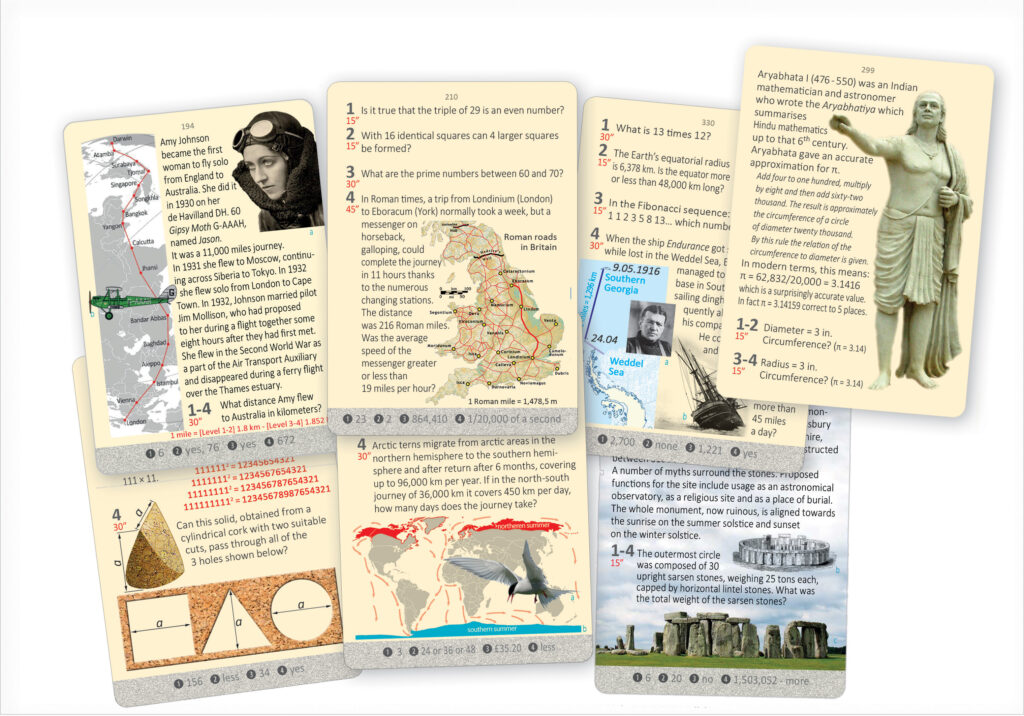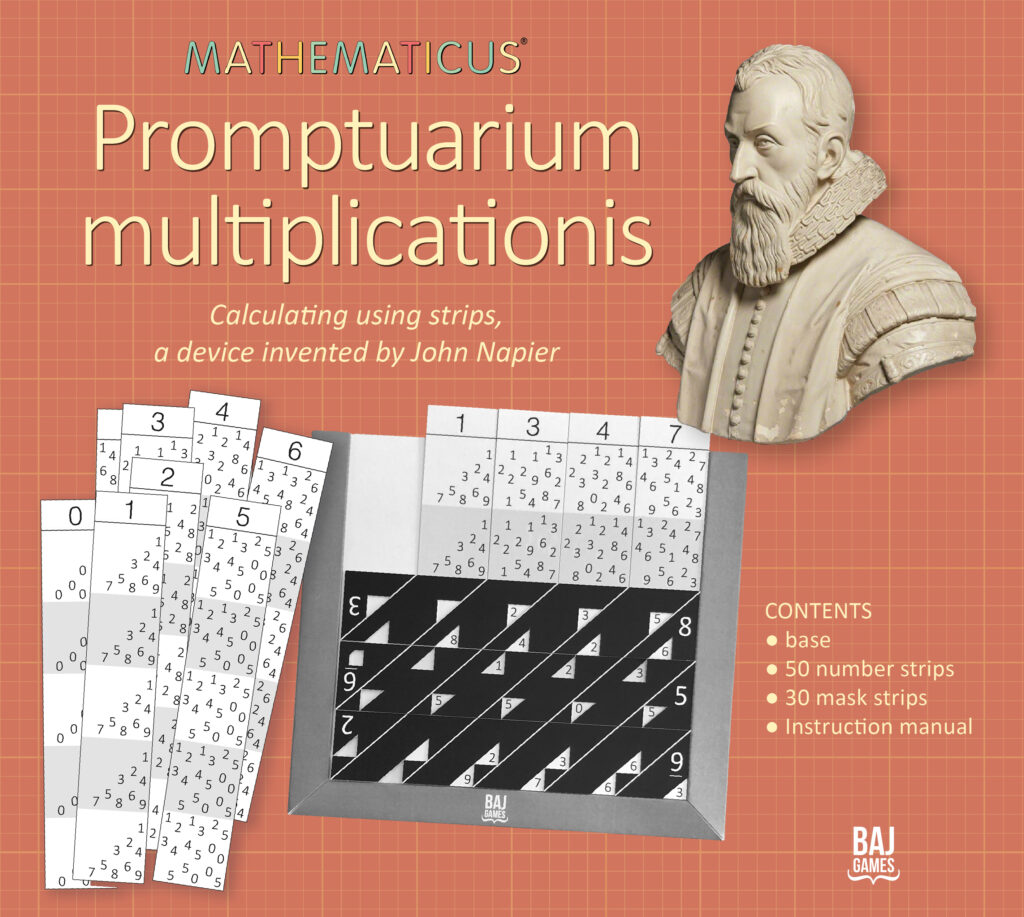Brief presentation for the world of education
This board game has wide-ranging uses for the educational sector as a source of stimuli and experimentation with mathematics in all of its various aspects.
Using ‘manual’ calculation tools, performing mental calculations, and becoming familiar with exotic numeral systems all serve to stimulate and develop mathematical sensitivity.
Furthermore, the application of calculation tools used by ancient civilizations, and the provision of numerous references to mathematics used by them, was a deliberate design choice taken to incorporate a historical approach to mathematics. We maintain that this approach renders the subject thought-provoking due to the fascination stirred up by confronting bygone civilizations.
This intentional historical and multicultural approach conveys the message that present day mathematics are the result of many civilizations’ endeavors and intellectual achievements during the ages which have transformed it into a universal, multicultural form.
Mathematicus is a game which has clearly defined rules, similar to Euclid’s axioms, and it unwinds eloquently to assure maximum player interaction.
Mathematicus has been designed for play at varying knowledge levels, whilst also stimulating basic level players to get acquainted with more complex mathematical issues.
The 416 Mathematicus cards that constitute the game provide more than 1,600 questions on arithmetic, geometric or logic mathematical themes in addition to others inspired by physics, biology, astronomy, science, and technology. The game board, book and cards also present brief biographies of 23 illustrious mathematicians.
Specific attention has been paid to ancient and exotic numeral systems through the incorporation of twenty or so monothematic cards that test number recognition employing the instructions and examples provided.
Players are also stimulated by the possibility of creating ‘customized’ cards, that can either formulate particular requests, refer to specific themes, or concern a different level from the one they currently possess. Packs of blank writeable cards can be ordered from the publisher. This activity by its very nature comprises interesting didactic outcomes.

The 9 advanced cards require players to perform calculations based on variables determined by rolling the dice and subsequently giving the result using digits from one of the Babylonian, Egyptian, Mayan, Arabic, Roman, Chinese and binary numeral systems. This is achievable thanks to the 165 special tiles provided (some tiles are shown here by way of example).
Learning about and actively practicing different numeral systems (base numbers 2, 10, 20, 60; addition methods, positional notation and mixed methods) is highly instructive and can be compared in this sense to learning one or more foreign languages.
The structure of the numeral systems featured is explained in the first section of the game book. Le risposte alle domande riguardo a sistemi di numerazione diversi si danno componendo il risultato con le tesserine (a fianco, qualche tesserina come esempio).
In addition, squares 4, 6, 11, 19, 29 and 34 have a key containing digits from the various numeral systems so that players always have them to hand (as illustrated in the adjacent examples featuring squares with Egyptian and Mayan numbers).
Performing mental calculations, tailored to the different levels of difficulty foreseen by the game, without the use of an electronic calculator is an inherent part of the game. Mental calculation is indeed worthy of being reevaluated in today’s society where it is increasingly considered a ‘lost art’.
The game also encourages players to take a fresh look at numbers, moving away from viewing numbers as simple data entries that generate results based on a typically unknown algorithm (electronic devices), in favor of a method which shows calculation steps and how data produces the final result. For this reason, a simplified slide rule and Napier’s bones are included for use as calculation tools to answer the game questions.
The slide rule in particular brings users closer to an ‘analog’ universe, one of important cultural and educational interest with distinctly different characteristics to those present in today’s prevalently ‘numerical’ world.
The second part of the attached book resumes and expands on the topics featured in the 35 game squares and provides basic snippets of relevant interest for each square.
The underlying concept is that each number has its own personality and often a story too, and that even the tiniest mathematical feature can have fascinating implications, unpredictable developments and guide us towards new areas of interest and research.
In addition, although unrelated to the game itself, photocopiable diagrams for angle measurement tools and an analog ruler have been included to resolve right triangle problems that are frequently used in astronomy, topography and navigation experiments and also described in the book.
Open the book at the place containing information on square 17, to find a suggested experiment on topographic surveying. The experiments proposed can be performed using the apposite tools located in the appendix which can be photocopied and assembled.
Other products
The board game represents the principal element of a series of products created for the dissemination of mathematics, manufactured from wood and paper, each accompanied by an extensive booklet.
These products, along with other kits on various mathematical topics, are listed below and can be easily used in schools as an enjoyable way of acquiring knowledge by performing interesting experiments.
- Stomachion
The mathematical game by Archimede - Napier’s Bones
Napier’s Bones Calculating using the ancient method invented by John Napier - Promptuarium multiplicationis
Calculating using strips, a device invented by John Napier - Constant width solids
Based on Rouleaux triangle















